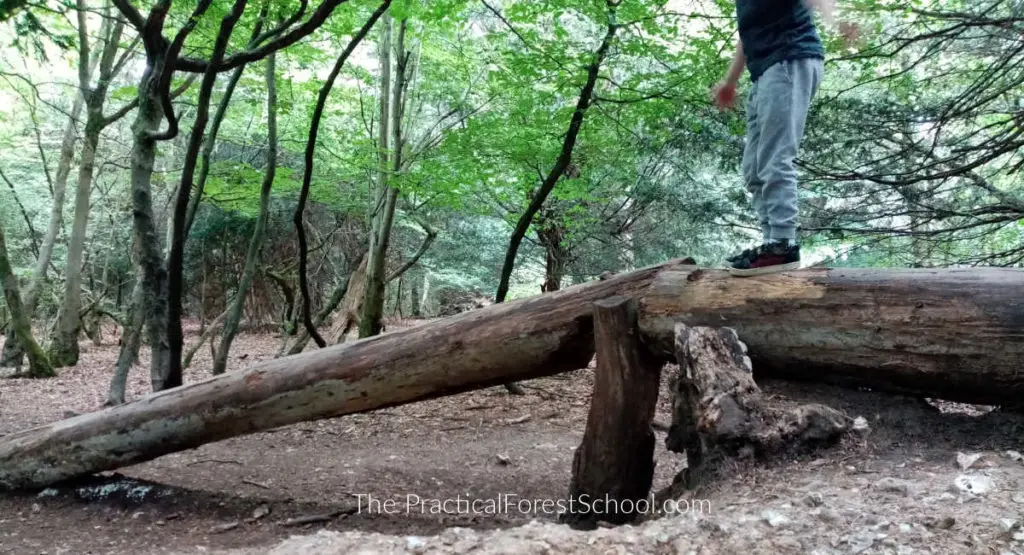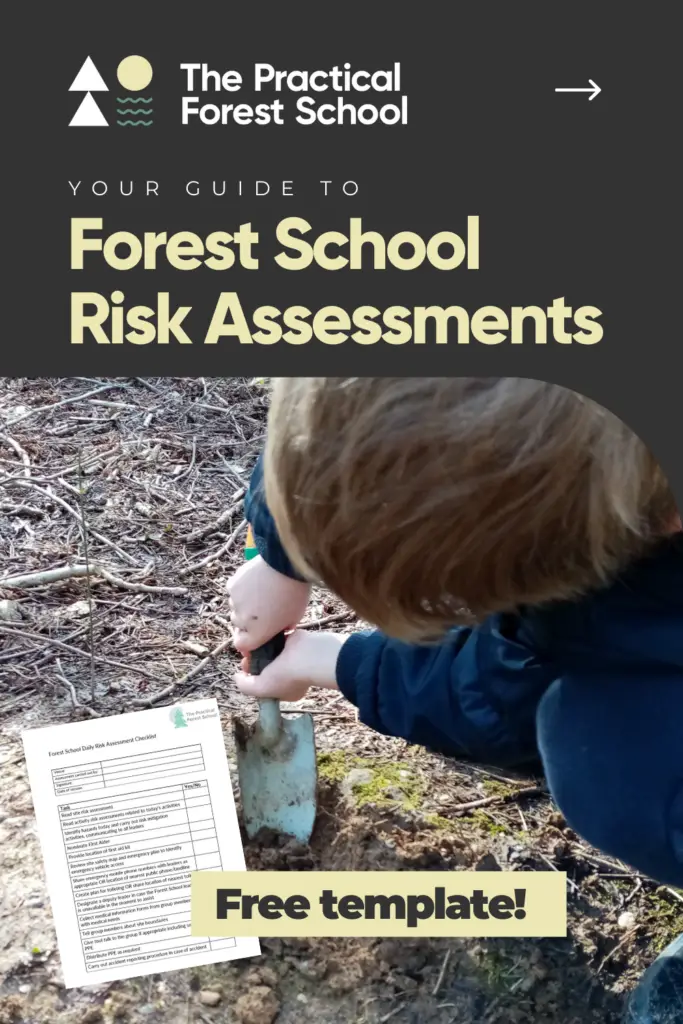How to Create Forest School Risk Assessments
There are three types of risk assessment you should do for your Forest School: site, activity and daily.
You’ll need to create a document for each (or you could just use our template documents – the ones we use for our setting).
Enter your email address below to grab the risk assessment templates in Word format. There are 3 pages, one for each of the risk assessments you’ll need.
Forest School Site Risk Assessment
This type of risk assessment looks at the environment where you are carrying out your Forest School activities.
You record the details about the site, and the hazards they present to people using the site for activities. Then you note the level of possible harm and the mitigating actions you can do to prevent or reduce harm.
Record the level of harm presented by the hazard on site when the actions have been carried out. Hopefully that will be ‘low’. If any hazards cannot be mitigated and managed to a level you feel is acceptable, think about what other actions you can take to make the site or activities safer, or whether it is possible to remove the risk totally by doing something in a different way.
The site risk assessment will cover things like:
- Streams
- Dipping pond/dipping platform on pond or stream
- Flora with berries or prickles e.g. nettles and brambles
- Tree roots and stumps/uneven ground
- Sticks
- Dog poo/other faeces
- Rubbish and debris (from humans, e.g. litter)
- Fire circle/Kelly kettle
- Rope swing
- Darkness
- Mushrooms/fungi
- Stinging insects e.g. bees, wasps
- Animals e.g. snakes
- Tools
- Boundaries and safety of fences and perimeter gates
- Trees.
For each identified site hazard, log what you can do about it. Then note who will take those actions and when. In some cases, you’ll have to make an assessment and take action on the day e.g. assessing the water height in a stream. In other cases, you’ll be able to take action before the session e.g. clearing stray nettles away from the fire circle zone.
Here’s an example of snippet of our risk assessment template filled in for some of the risks in our environment:


Activity Risk Assessments
As well as an overall risk assessment for the whole site, you need to do risk assessments for each activity including tool use. Here are some activities where you’ll need to do risk assessments.
- Collecting materials e.g. leaves and sticks
- Using a bit and brace
- Making a rope swing or a crane
- Using a knife
- Using a folding saw
- Using loppers or secateurs
- Climbing trees
- Using ropes
- Cooking
- Toasting
- Drinking
- Lighting fires/being around fire
- Taking part in organised games.
You’ll also want to create risk assessments for leader-led activities like weaving, crafts, although they are likely to be lower risk than child-led forest exploration and tool use.
Here’s an example of what our template looks like once it’s filled in for an activity, in this case: organised games.

This video is a good example of children themselves working out a suitable approach to risk during an activity. While we do risk assessments as a very formal activity, in “real life” we’re assessing risk every time we take a step. The forest gives children the opportunity to test out their risk taking abilities and to uncover their limits.
Want a ready-made activity risk assessment template? Grab our free editable Word document below.
Daily Risk Assessments
Child-led activities can be spontaneous, and that’s what makes them fun, if sometimes unpredictable! It does mean you’ll be doing a lot of dynamic risk assessing on the day. You’ll use your knowledge and experience – and common sense – to assess the benefits and risk of activities the children are doing, enabling you to keep them safe.
The daily risk assessment is your way to check that today you can lead a safe session. You’ll be checking for:
- Changes in the setting e.g. new things that have materialised since your last visit – this happens a lot on school sites!
- Water height in streams – sometimes it will be too high to allow children to play in the water
- Bee and wasp nests
- Changes in the weather
- Anything else seasonal or specific to the day.
Use a daily risk assessment as a reminder of the things to look for so that you can make dynamic decisions based on the environment today.
The risk assessments should be a practical guide for you – part of your handbook for running your Forest School. They can also be included as evidence for your Level 3 portfolio.


About the author: Jon Borley
Jon qualified as a Level 3 Forest School Leader with the Sussex Wildlife Trust. He works independently as a practitioner running forest school clubs and also within schools both in a forest school capacity and as an outdoor learning teaching assistant, working with preschoolers to secondary-aged children. He has previously led sessions for adults as part of professional development events for the Sussex FSA, and is a member of MIAS.
how much is the activity planner, there’s no mention of cost until you get to the credit card payment page…
Hello Ruth, the risk assessment template is free. Did you mean the annual planner? That’s £3.